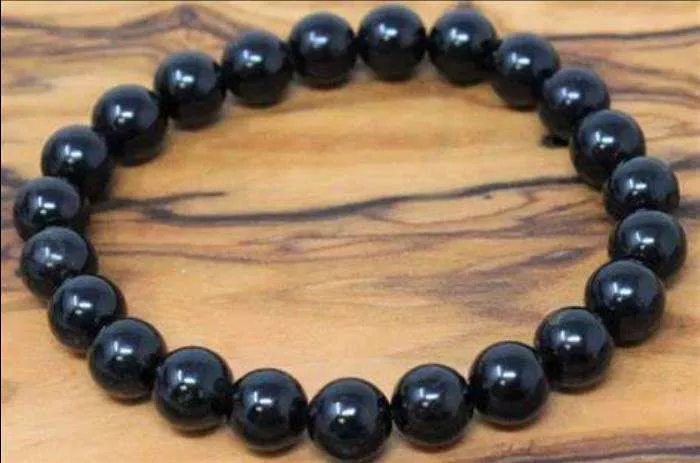Black tourmaline is one of the most popular and accessible protective stones in the jewelry market. As a professional jeweler who has bought, sold, and worked with black tourmaline for over 15 years, I can tell you its value ranges dramatically based on several key factors. From affordable tumbled stones to rare collector specimens, black tourmaline’s price reflects its quality, size, origin, and how it’s been transformed into jewelry. Let’s examine what determines black tourmaline’s worth and how to assess value when buying or selling.
Raw Black Tourmaline Prices
Uncut black tourmaline crystals have their own pricing structure separate from finished jewelry. The value of rough material depends on:
Crystal Quality
- Terminated crystals (with natural points) command 20-30% more
- Damaged or broken pieces sell at discount
- Specimens with good luster fetch premium prices
Size Matters
- Small chips (1-50g): 0.50−2 per gram
- Palm-sized pieces (50-200g): 2−5 per gram
- Large collector crystals (200g+): 5−15 per gram
Origin Variations
- Brazilian material typically costs 10-15% more
- African tourmaline offers good mid-range value
- Pakistani sources provide budget options
Special Features
- Rare parallel growth clusters increase value
- Striking striations can add 15-20%
- Natural etch patterns attract collector premiums
Tumbled and Polished Stone Values
The tumbled stone market represents most black tourmaline sales:
Standard Tumbled Pieces
- Small (5-10mm): 0.50−2 per stone
- Medium (10-20mm): 2−5 per stone
- Large (20mm+): 5−15 per stone
Polished Freeforms
- Palm stones: 10−30 each
- Worry stones: 8−25 each
- Display specimens: 20−100+
Quality Considerations
- High polish adds 20-30% value
- Perfect shapes cost more
- Pitting reduces worth
Black Tourmaline Jewelry Pricing
When set in jewelry, black tourmaline’s value multiplies based on craftsmanship:
Basic Wire Wrap Pendants
- Small stones: 15−40
- Medium stones: 40−80
- Large stones: 80−200
Silver Jewelry Pieces
- Simple bezel pendants: 50−150
- Rings with small stones: 75−200
- Statement rings: 150−400
Gold Jewelry Settings
- 10K gold pendants: 200−600
- 14K gold rings: 300−900
- Designer pieces: 500−2000+
Additional Value Factors
- Handmade commands 30-50% premium
- Brand reputation affects pricing
- Artistic designs increase worth
Collector Grade Specimen Values
Fine mineral specimens reach much higher price points:
Aesthetic Crystals
- Small (under 5cm): 30−100
- Medium (5-10cm): 100−300
- Large (10cm+): 300−1500
Museum Quality Pieces
- Exceptional form: 1500−5000
- Rare associations: 5000−15,000
- Historic specimens: Priceless
What Collectors Pay For
- Perfect terminations
- Undamaged surfaces
- Interesting growth habits
- Notable provenance
Size and Carat Weight Impact
For faceted black tourmaline, size dramatically affects per-carat prices:
Small Stones (1-3ct)
- Commercial quality: 5−15/ct
- Good quality: 15−30/ct
- Excellent quality: 30−50/ct
Medium Stones (3-10ct)
- Commercial: 8−20/ct
- Good: 20−40/ct
- Excellent: 40−75/ct
Large Stones (10ct+)
- Commercial: 10−25/ct
- Good: 25−50/ct
- Excellent: 50−100+/ct
Quality Grading Factors
Several elements determine black tourmaline’s quality grade:
Color
- Pure black commands top prices
- Grayish tones reduce value
- Inconsistent color lowers grade
Clarity
- Eye-clean stones are rarest
- Minor inclusions acceptable
- Fractures significantly decrease worth
Cut Quality
- Excellent proportions add value
- Poor cutting reduces brilliance
- Custom cuts command premiums
Polish
- Mirror finish expected
- Visible polish lines downgrade
- Scratches hurt value
Market Trends Affecting Value
Current market forces influence black tourmaline pricing:
Demand Factors
- Rising crystal healing popularity
- Increased metaphysical interest
- Growing jewelry applications
Supply Considerations
- Stable Brazilian production
- New African sources emerging
- Mining challenges in some regions
Economic Impacts
- Dollar fluctuations affect imports
- Fuel costs influence shipping
- Tariffs may alter pricing
How to Assess Your Black Tourmaline’s Worth
Evaluating your own pieces requires examining:
For Rough Crystals
- Measure dimensions accurately
- Check for damage
- Research comparable specimens
For Jewelry
- Determine metal value separately
- Assess stone quality
- Consider craftsmanship
Professional Appraisal
- Recommended for insurance
- Provides documentation
- Helps with resale
Investment Potential
While not traditional investment gems:
Value Appreciation
- Quality specimens slowly increase
- Rare forms gain collector interest
- Signed designer pieces rise
Market Liquidity
- Jewelry sells readily
- Specimens move slower
- Wholesale vs retail differences
Buying Tips
- Focus on quality over quantity
- Seek unique pieces
- Consider future trends
Conclusion
After years in the trade, my professional recommendations:
For Buyers
- Pay fair prices for quality
- Avoid overpaying for hype
- Build relationships with sellers
For Sellers
- Price competitively
- Highlight unique features
- Provide authenticity guarantees
For Collectors
- Buy the best you can afford
- Specialize in certain types
- Document provenance
Black tourmaline’s value ultimately depends on what someone is willing to pay. While price guides provide benchmarks, the real worth is determined when a knowledgeable buyer and seller agree. Whether you’re buying or selling, understanding these valuation factors ensures fair transactions for this remarkable protective stone.
Remember that beyond monetary value, black tourmaline’s true worth includes its beauty, energetic properties, and the joy it brings to owners. The best pieces are those you’ll treasure regardless of market fluctuations.
Related topics:
- Is Pink Tourmaline Durable? Key Insights for Jewelry Lovers
- Does Pink Tourmaline Change Color? Exploring the Mystery
- Opal vs. Tourmaline: Which is the More Expensive Gemstone?


